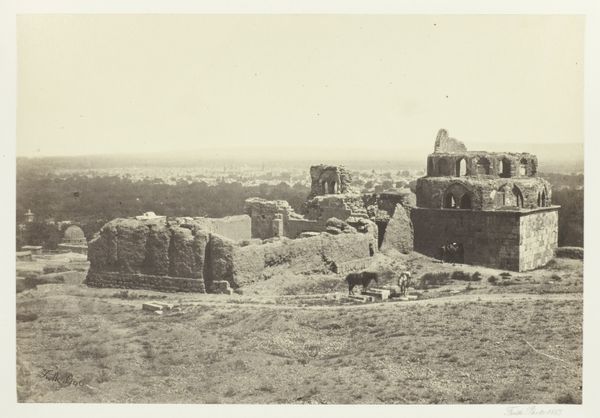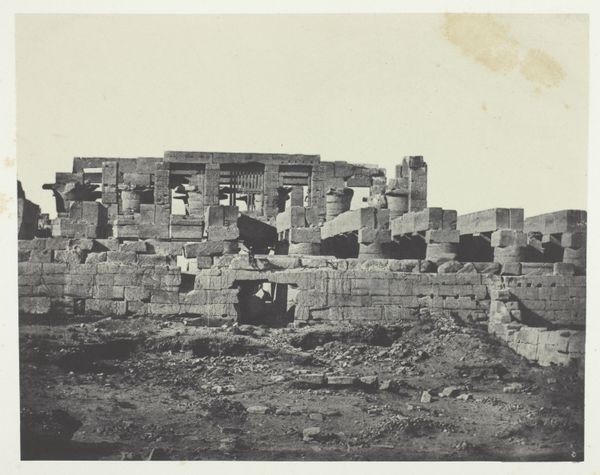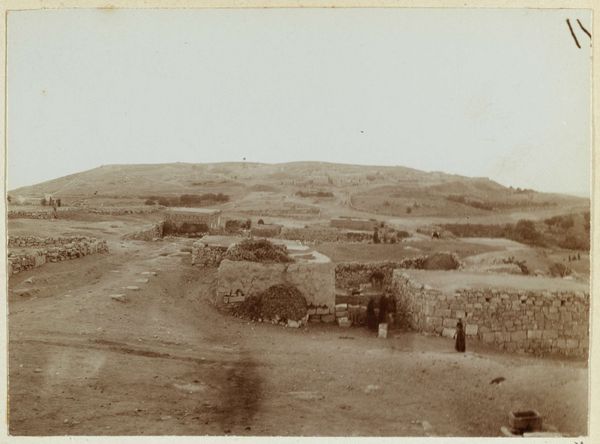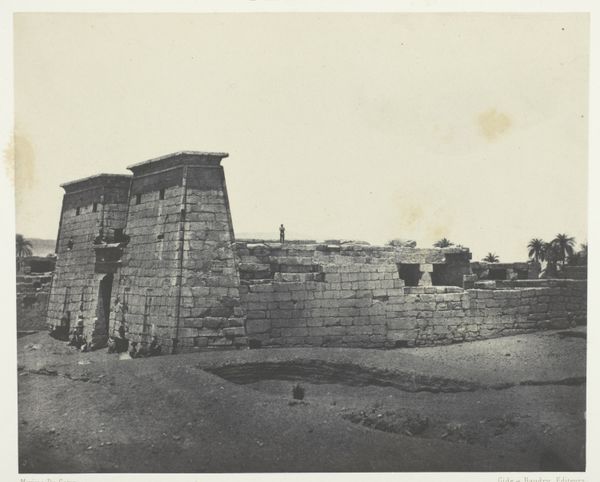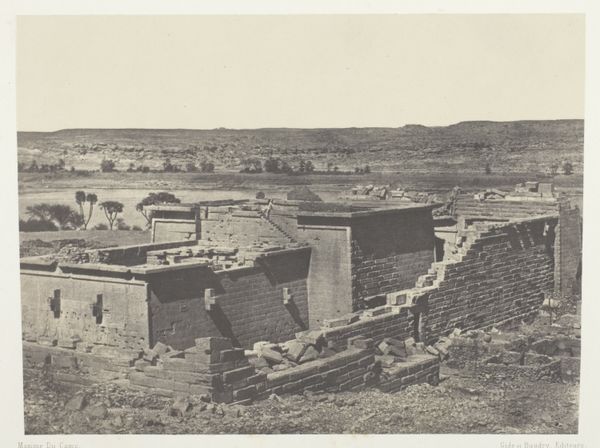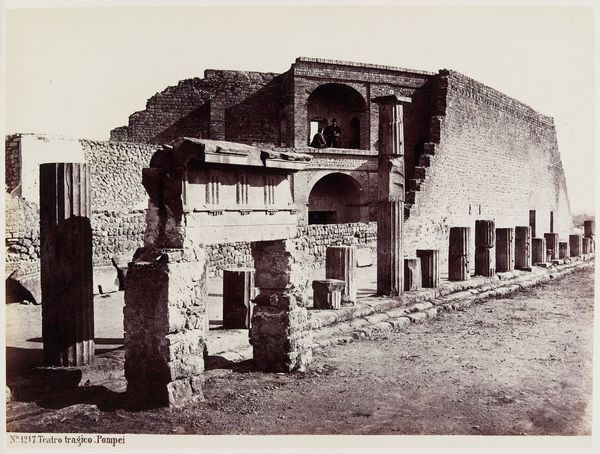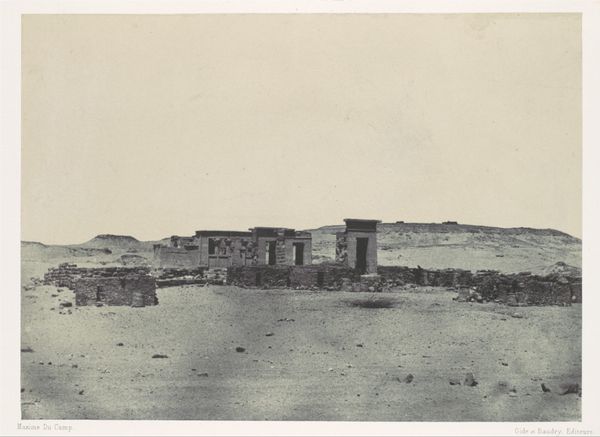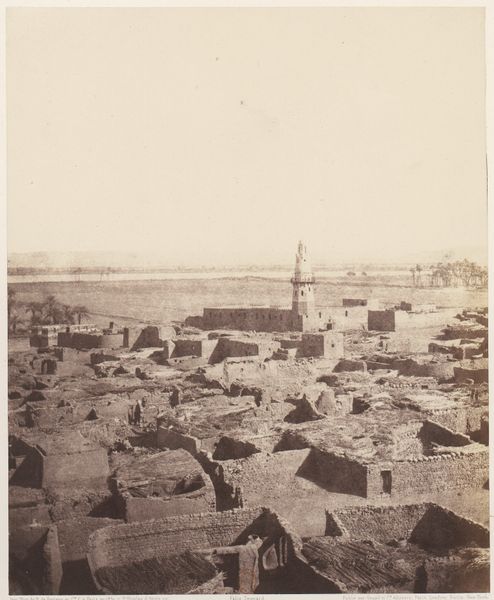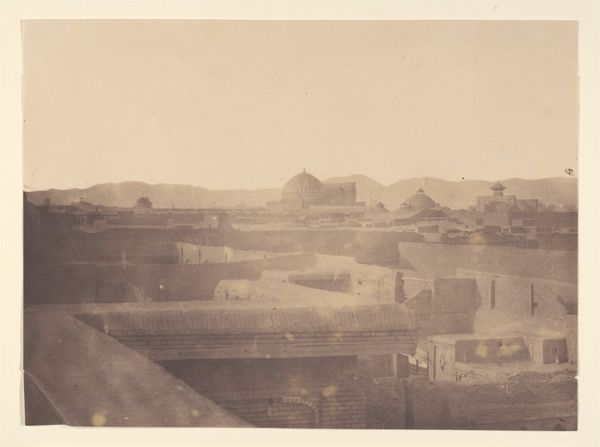
photography, gelatin-silver-print, architecture
#
landscape
#
photography
#
gelatin-silver-print
#
monochrome photography
#
19th century
#
architecture
#
monochrome
Dimensions: image: 25 x 32.9 cm (9 13/16 x 12 15/16 in.) sheet: 38.8 x 49.2 cm (15 1/4 x 19 3/8 in.)
Copyright: National Gallery of Art: CC0 1.0
Curator: This evocative gelatin-silver print is titled "Zuni Pueblo," taken in 1879 by John K. Hillers. Editor: The starkness of it is what hits me first. That flat, almost bleached sky... it emphasizes the harsh landscape and the weight of the settlement on the horizon. It speaks of endurance, doesn't it? Curator: Absolutely. Hillers was part of a larger effort by the U.S. Geological Survey to document the American West, ostensibly for scientific purposes, but laden with colonial undertones. It's a portrayal, capturing a specific moment, that perpetuates a particular narrative. We can ask: Whose perspective truly frames this photograph? Editor: And what do these structures signify? Those walls and fences, they look rudimentary, built with available materials... But beyond mere functionality, I see symbolism of protection, community... Perhaps even a boundary between the known and the unknown. Curator: Yes, that distinction is critical. This image circulated widely, informing perceptions of indigenous life. These visual representations served as both records and tools in the larger narrative of westward expansion. What are the lasting effects on Zuni Pueblo culture after generations subjected to having their identity framed through an outsider's lens? Editor: Think of the materials—earth, wood, and water, forged by necessity and ancient practice. In monochrome, they speak across time and cultures, withstanding trials, with an emotional weight of human tenacity that crosses ages. Curator: Consider that. The photograph becomes an instrument shaping our understanding. To truly respect this photograph, we need to go beyond its surface appeal and delve into the multifaceted layers of history, culture, and power it holds. Editor: This photograph offers so much; a visual record tinged with ambiguity and resilience. Seeing how these symbols resonate today sparks conversation and helps deepen our connection. Curator: It reminds us to engage thoughtfully with art as an active process. How might our view shift when viewing it in the context of resistance, resilience, and reclamation?
Comments
No comments
Be the first to comment and join the conversation on the ultimate creative platform.
